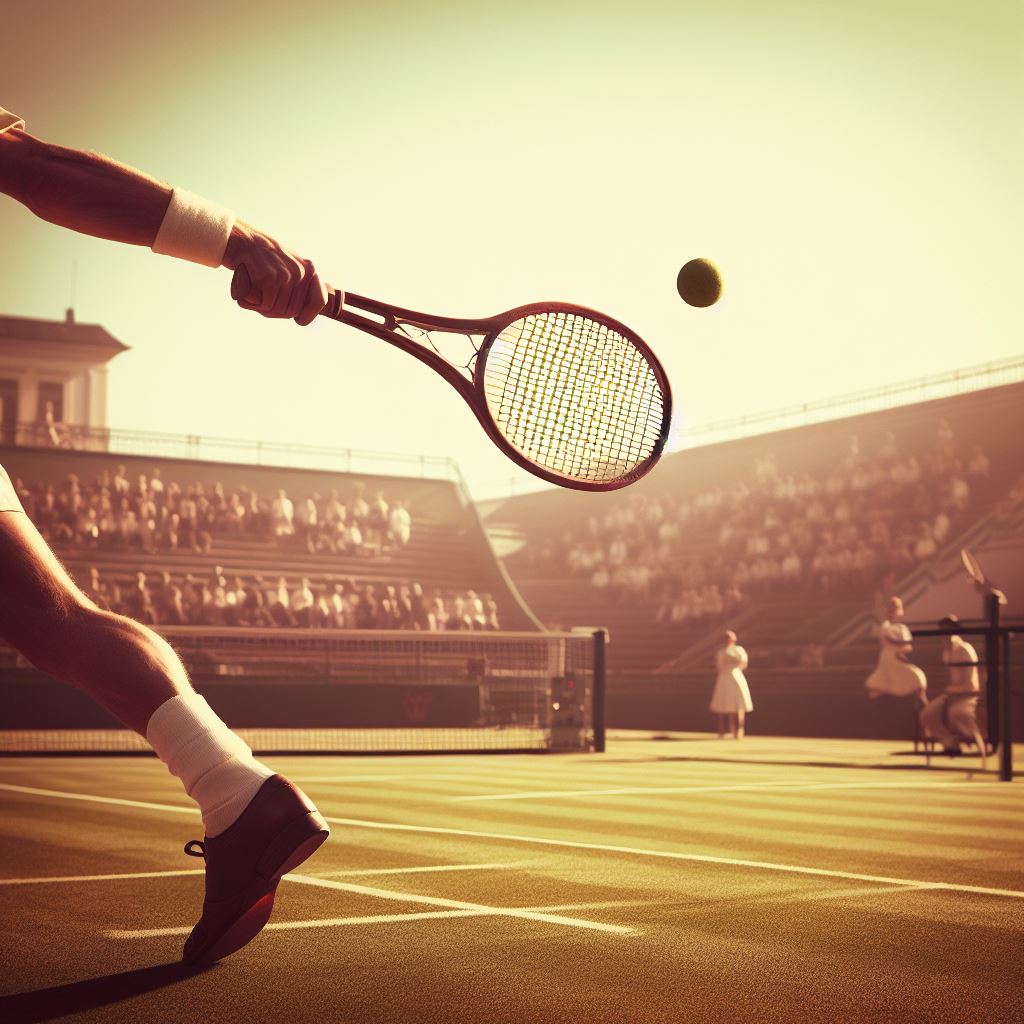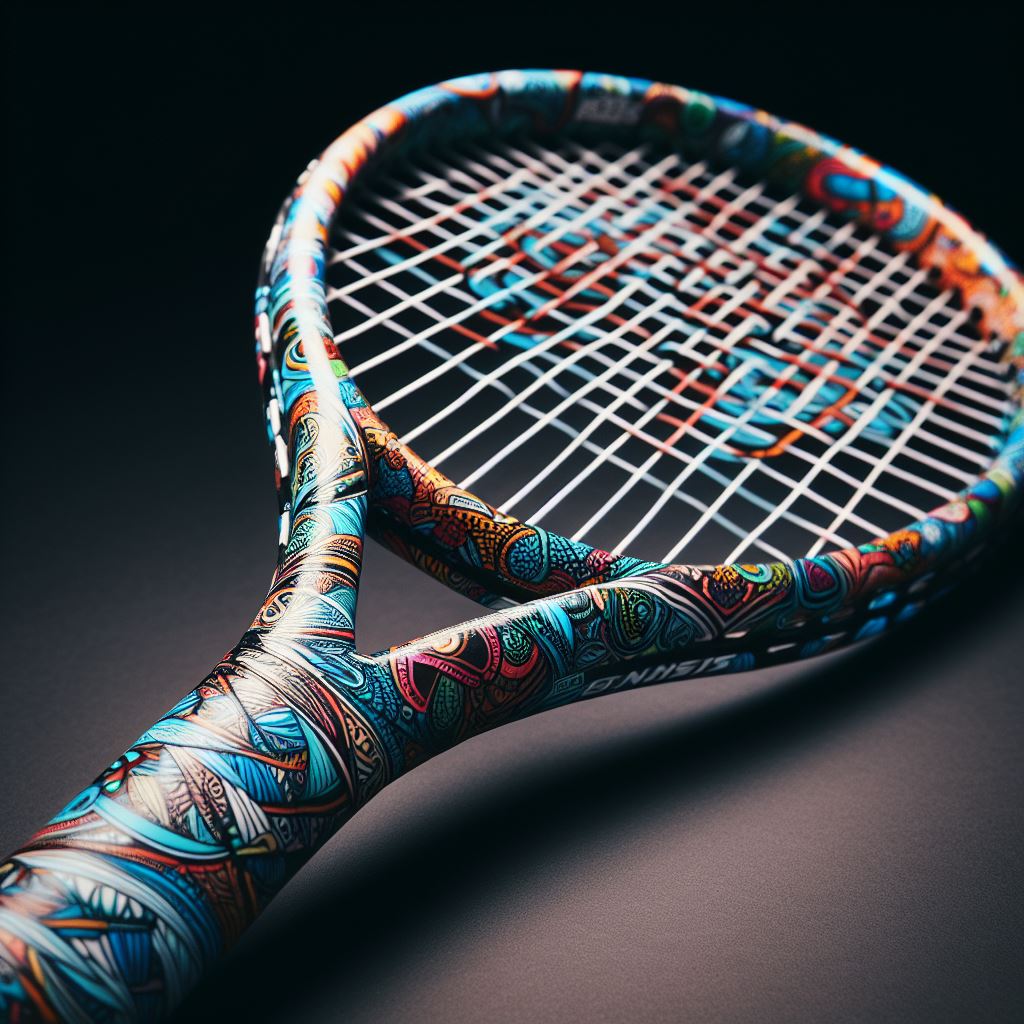In the world of tennis, where time seems to stand still, the art of mastering classic techniques is paramount. Like a skilled artist wielding a brush, a tennis player must possess the power and accuracy of a well-executed serve, the finesse of close-net volleys, and the agility and speed of precise footwork.
With the forehand and backhand strokes as their canvas, players strive to perfect their groundstrokes, while the mental game keeps them focused and confident.
Join us as we delve into the timeless techniques that have shaped the sport of tennis.
Key Takeaways
- Serve placement: Exploit opponent’s weaknesses, create opportunities, deep understanding of the game, anticipation, execute shots with precision
- Serve technique: Maximize power and spin, pressure on opponent, make it challenging to return, spin adds unpredictability, proper body positioning, arm motion, and timing
- Angle control: Positioning, placement at the net, adjust racket face and angle of contact, direct the ball with precision, exploit opponent’s weaknesses
- Soft hands and touch: Volley technique, relaxed grip, absorb pace of the ball, controlled placement, delicate shots, quick reactions, adjust racket face
Serve – Mastering the Power and Accuracy
The serve is a crucial element in tennis, requiring mastery of both power and accuracy. It sets the tone for the entire point, giving the server the opportunity to gain control and dictate play. Two key aspects to focus on when perfecting the serve are serve placement and serve technique.
Serve placement is about finding the perfect spots on the court to exploit your opponent’s weaknesses and create opportunities for yourself. By strategically placing your serve, you can force your opponent into difficult positions and make it harder for them to return the ball effectively. This requires a deep understanding of the game, anticipation, and the ability to execute your shots with precision.
Serve technique is equally important, as it allows you to maximize power and spin. A powerful serve can put pressure on your opponent, making it more challenging for them to return the ball, while spin can add unpredictability and create angles that are difficult to handle. Proper technique involves a combination of body positioning, arm motion, and timing that generates maximum force and control.
Now that we have explored the nuances of the serve, let’s transition into the subsequent section about volleys – the art of close-net play.
Volleys – The Art of Close-Net Play
Mastering the art of close-net play, volleys require precise hand-eye coordination and quick reflexes. This essential skill allows players to take control of the point by intercepting the ball before it bounces. To excel in volleys, players must focus on two key aspects: angle control and volley technique.
Angle control is crucial in positioning and placement at the net. By adjusting the racket face and the angle of contact, players can direct the ball with precision. This allows them to exploit their opponent’s weaknesses and create opportunities for winners. Additionally, mastering angle control enables players to effectively defend against powerful shots by redirecting the ball away from their opponents.
Volley technique is equally important. Developing soft hands and touch is essential to execute volleys with finesse. It involves using a relaxed grip and absorbing the pace of the incoming ball, allowing for controlled placement and delicate shots. By practicing volleys regularly, players can improve their ability to react quickly and adjust their racket face, enabling them to execute a variety of shots with accuracy.
To summarize, volleys require players to have excellent hand-eye coordination, quick reflexes, angle control, and volley technique. By mastering these skills, players can dominate the net, dictate play, and increase their chances of success on the tennis court.
| Column 1 | Column 2 | Column 3 |
|---|---|---|
| Angle control | Positioning | Placement at the net |
| Volley technique | Soft hands | Touch |
Footwork – Agility and Speed on the Court
Developing agile footwork and maintaining speed on the tennis court are essential for players to effectively transition from the net to the baseline and cover the court with precision. To improve agility and speed, players can incorporate various agility drills and practice specific lateral movement techniques.
Here are some key drills and techniques to enhance footwork on the tennis court:
- Cone Drills: Set up cones in a zigzag pattern and practice moving quickly between them, simulating the quick lateral movements required during a match.
- Speed Ladder Exercises: Utilize a speed ladder to improve footwork by practicing quick and precise steps, focusing on both forward and lateral movements.
- Shadow Drills: Perform shadow drills by mimicking the movements of an opponent, focusing on quick changes in direction and footwork.
By incorporating these agility drills and practicing lateral movement techniques, players can improve their footwork and increase their speed on the court. This will enable them to effectively cover the court and respond to their opponent’s shots with precision.
Transitioning to the subsequent section about ‘groundstrokes – perfecting the forehand and backhand’, mastering footwork is crucial for setting up and executing powerful groundstrokes. By maintaining agility and speed, players can position themselves optimally and generate maximum power and control in their shots.
Groundstrokes – Perfecting the Forehand and Backhand
To perfect your forehand and backhand groundstrokes, employ the timeless techniques of precise footwork and expert shot execution. These fundamental skills are essential for any tennis player looking to improve their game.
Let’s start with the forehand grip. The most common grip used for the forehand is the Eastern grip, where the base knuckle of the index finger is placed on the third bevel of the racket handle. This grip allows for greater control and power when hitting the ball.
When it comes to backhand technique, there are two main types: the one-handed backhand and the two-handed backhand. The one-handed backhand requires a strong wrist and forearm for stability, while the two-handed backhand provides more power and control through the use of both hands on the racket.
To further enhance your groundstrokes, it is important to focus on shot execution. This involves maintaining a balanced stance, using your legs to generate power, and following through with a smooth motion. Remember to keep your eye on the ball and use your body rotation to add extra power to your shots.
By mastering the forehand grip and backhand technique, and honing your shot execution, you will be well on your way to perfecting your groundstrokes in tennis.
Transition: Now that we have discussed the techniques for perfecting groundstrokes, let’s delve into the mental game of staying focused and confident on the court.
Mental Game – Staying Focused and Confident
Transitioning from the techniques of perfecting groundstrokes, a crucial aspect of a tennis player’s game is maintaining focus and confidence on the court. The mental game plays a significant role in a player’s performance, as it can determine the outcome of a match.
Staying motivated and managing nerves are key elements in developing a strong mental game. Here are three techniques to help players stay focused and confident:
- Setting specific goals: By setting clear and achievable goals, players can stay motivated and focused during a match. Setting short-term goals, such as winning the next point or executing a specific shot, can help players maintain their concentration and boost their confidence.
- Positive self-talk: Developing a positive mindset is essential in staying confident on the court. Using positive self-talk, players can reinforce their belief in their abilities and stay motivated even in challenging situations. Encouraging phrases like ‘I can do this’ or ‘I have practiced for this moment’ can help players overcome nerves and maintain their focus.
- Visualization: Visualizing success can be a powerful tool in staying focused and confident. By visualizing themselves executing successful shots or winning points, players can create a mental blueprint for success. This technique helps players stay motivated and mentally prepared, even before stepping onto the court.
Frequently Asked Questions
How Do I Improve My Second Serve Technique?
Improving second serve technique requires a focus on key elements such as grip, stance, and body positioning. Additionally, mastering the slice serve can provide a valuable variation to your game, increasing your chances of success on the court.
What Are Some Tips for Executing a Drop Volley Effectively?
To execute a drop volley effectively, it is crucial to master the technique and improve reflexes. By positioning oneself correctly, utilizing proper footwork, and maintaining focus, players can enhance their ability to execute this shot accurately and efficiently.
How Can I Increase My Foot Speed and Agility on the Tennis Court?
To enhance foot speed and agility on the tennis court, incorporating plyometric exercises and ladder drills can be highly effective. Cross training and agility ladder training can also contribute to improved performance in these areas.
What Is the Best Grip for a Forehand Groundstroke?
The best grip for a forehand groundstroke is the Eastern grip, which allows for optimal power and control. Proper footwork is crucial in executing this technique effectively, ensuring a strong foundation for a powerful shot.
How Do I Overcome Nerves and Maintain Mental Focus During a Tennis Match?
To overcome pre-match nerves and maintain mental focus during a tennis match, one must employ effective strategies such as deep breathing exercises, visualization techniques, positive self-talk, and staying present in the moment. These techniques can help athletes perform at their best under pressure.
Conclusion
In conclusion, mastering the classic techniques of tennis is essential for achieving timeless success on the court. By honing the power and accuracy of our serve, perfecting our volleys for close-net play, improving our agility and speed through footwork, and refining our forehand and backhand groundstrokes, we can elevate our game to new heights.
Additionally, staying focused and confident in the mental game is crucial for maintaining a competitive edge. By employing these techniques, players can enhance their performance and excel in the sport of tennis.








No Comment! Be the first one.